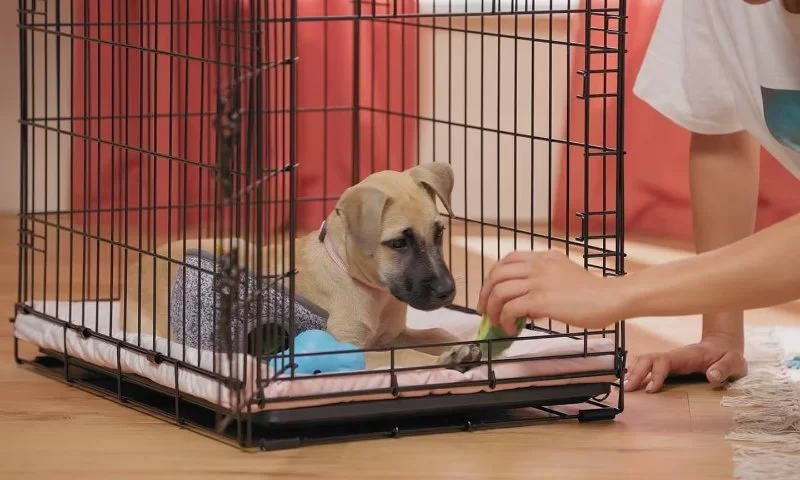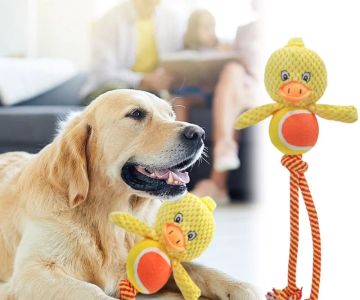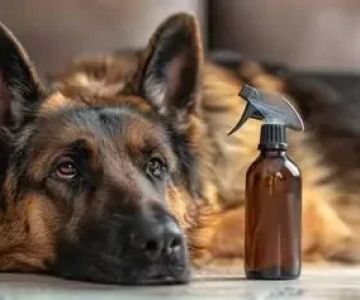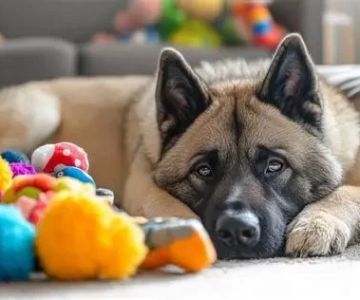Understanding Puppy Anxiety During Crate Training
Crate training is one of the most effective ways to teach your puppy structure and security, but for many new pet parents, the challenge lies in managing anxiety during this process. Puppies are naturally social and curious, so being confined in a crate can feel isolating at first. Understanding where that anxiety comes from is the first step toward easing it.
When puppies cry, whine, or scratch at the crate door, they’re not being “bad” — they’re expressing discomfort or uncertainty. Most anxiety during crate training stems from separation fear or unfamiliar surroundings. Much like toddlers learning to sleep alone, puppies need reassurance and gradual exposure to feel safe in their space.
Recognizing the Signs of Crate Anxiety
Not every restless pup is suffering from true anxiety, but it’s important to know the difference between mild resistance and emotional distress. Common signs of crate-related anxiety include excessive barking, drooling, panting, destructive chewing, or even attempts to escape. Some puppies may also refuse food or avoid entering the crate altogether.
Early recognition allows you to adjust your approach before anxiety becomes a long-term behavior problem. The goal is to help your puppy associate the crate with comfort and rest, not confinement or punishment. Consistency and patience are your strongest tools in this process.
Creating a Safe and Inviting Crate Environment
The environment inside the crate plays a huge role in shaping your puppy’s emotional response. A crate should never feel like a cage — it should feel like a den. Start by choosing the right size: your puppy should have enough space to stand, turn around, and lie down comfortably, but not so much that they can use one corner as a bathroom area.
1. Use Positive Associations
Introduce the crate as a positive place by tossing in treats, toys, or a soft blanket. You can even feed your puppy their meals inside the crate to build a sense of comfort. When they enter voluntarily, praise them warmly — never force or close the door immediately during early introductions.
2. Keep It Comfortable
Line the crate with cozy bedding and a familiar-smelling item, such as a shirt you’ve worn. Puppies find comfort in familiar scents, which can significantly reduce stress. Avoid using strong cleaners or air fresheners near the crate, as sensitive noses might interpret those as threats.
Gradual Steps to Reduce Crate Anxiety
Managing puppy anxiety during crate training requires small, deliberate steps. Rushing the process only increases fear. Here’s how to build crate confidence progressively:
1. Start with Short Sessions
Begin with five-minute intervals, keeping the door open while your puppy explores. Reward calm behavior and gradually extend the time as your pup grows comfortable. Once they can relax inside with the door closed for short periods, start stepping out of sight briefly before returning.
2. Practice Calm Departures and Returns
One of the biggest triggers for anxiety is the moment you leave the room. Avoid dramatic goodbyes or greetings — this can reinforce anxious anticipation. Instead, leave and return quietly, showing your puppy that coming and going is normal and not something to panic over.
3. Create a Predictable Routine
Puppies thrive on consistency. Crate time should align with nap schedules, feeding, and bathroom breaks. When the crate becomes part of a routine, your puppy learns to expect it rather than fear it. Over time, they’ll begin to enter the crate voluntarily when tired or seeking solitude.
Real Stories: Overcoming Crate Anxiety with Patience
Consider Daisy, a 10-week-old Golden Retriever whose owners struggled with sleepless nights due to her crate crying. They started over by reintroducing the crate gradually — leaving the door open during playtime and using treats as positive reinforcement. Within a week, Daisy began curling up in her crate voluntarily. Two weeks later, she was sleeping through the night without distress.
Another story comes from Jake, a rescued terrier mix who had severe separation anxiety. His owners worked with a behavior specialist at Hidden Brook Veterinary to create a personalized training plan. With consistent short sessions, calming background music, and pheromone diffusers, Jake’s crate anxiety improved dramatically. These success stories highlight that every puppy can learn to feel at ease with time and care.
Helpful Tools and Calming Techniques
Several tools can make crate training smoother for anxious puppies. Soft music, white noise machines, and specialized calming sprays can help soothe nerves. Puzzle toys and slow feeders are excellent distractions that keep your pup mentally engaged inside the crate.
1. Try Calming Aids
Calming pheromone diffusers mimic natural scents that mother dogs release to relax their puppies. Combined with gentle classical music or a ticking clock near the crate, they create a peaceful atmosphere.
2. Exercise Before Crate Time
A tired puppy is a calm puppy. Ensure your dog gets adequate play and exercise before crate sessions. This helps them associate crate time with relaxation and recovery rather than confinement.
When to Seek Professional Guidance
If your puppy continues to show severe anxiety — like destructive behavior, excessive salivation, or refusal to enter the crate after several weeks — it may be time to consult a professional. Veterinary behaviorists can determine whether underlying issues such as separation anxiety or trauma are contributing to the fear.
At Hidden Brook Veterinary, we offer personalized puppy behavior consultations designed to identify the root causes of anxiety. Our experts help pet owners develop structured training routines and offer products and therapies that support calm, confident crate behavior. Every puppy deserves to feel safe, and with the right guidance, crate time can become their favorite resting place.
Building Confidence for Life
Crate training is more than just a behavioral exercise — it’s a foundation for lifelong confidence. When done correctly, the crate becomes a secure retreat your puppy chooses voluntarily, not a space they dread. With patience, love, and consistent structure, even the most anxious puppy can transform into a calm, well-adjusted companion.
By taking the time to understand your puppy’s emotions and responding with empathy, you’re not just teaching them to accept a crate — you’re teaching them trust, independence, and peace of mind. The bond that forms through gentle crate training can last a lifetime.












